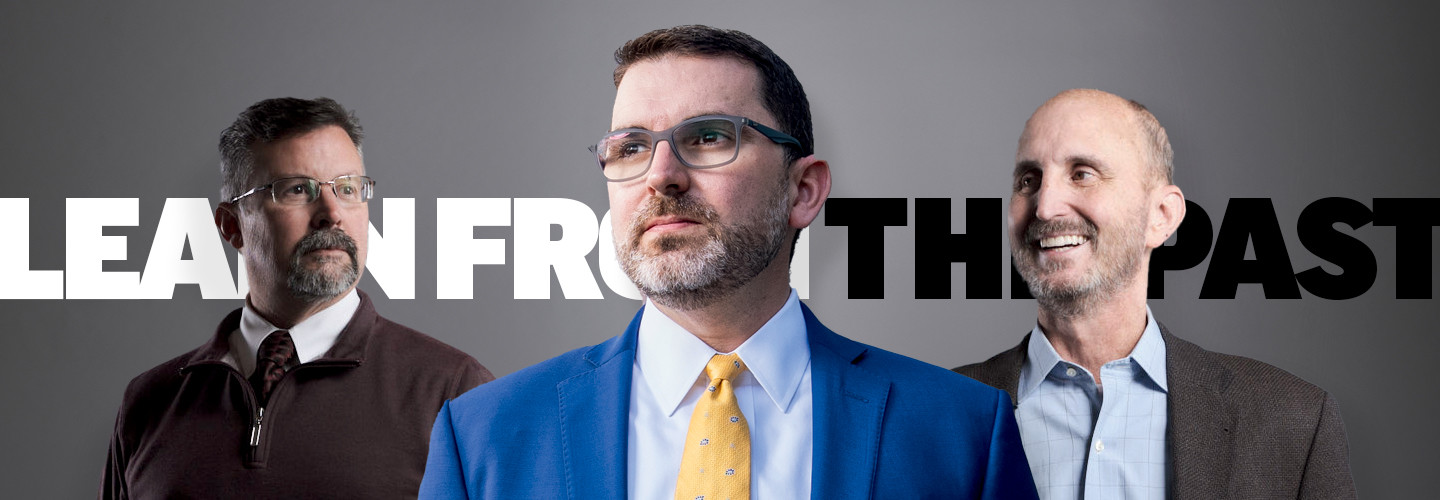Four years have passed since many U.S.-based workers were sent home to protect themselves from the COVID-19 pandemic. The scurry to equip those people with the technology needed for them to continue their jobs remotely — and in the case of federal employees, to keep the government running at a time of national emergency — was unprecedented.
Government agencies, in particular, had to procure and deploy new IT with a speed they’d never needed before. Much of the environment constructed in the spring of 2020 remains today, although updated and adapted for today’s hybrid workforce. FedTech Managing Editor Elizabeth Neus spoke to three IT leaders who were there in March 2020 and who are still with their agencies: Douglas Cossa, CIO of the Defense Intelligence Agency (deputy CIO in 2020); Jerry Golley, CIO of the Farm Credit Administration; and Vaughn Noga, CIO of the Environmental Protection Agency. The three talk about the changes made then that remain in place today.
Click the banner below to begin modernizing your agency's digital experience.
FEDTECH: What IT changes made to cope with the pandemic are still part of your daily routine?
GOLLEY: We implemented and rely upon videoconferencing capabilities, a document approval routing system and an all-digital document storage culture. During the pandemic, FCA made maximum use of technology, such as Microsoft Teams, that allowed staff to work remotely. We also continued to follow some of the facilities-related guidance from the Safer Federal Workforce Task Force.
NOGA: We’re having this conversation through a videoconferencing technology, Zoom. At the EPA, we widely use MS Teams, and I would say that's the norm today and going forward. Before the pandemic, we were having long conversations about how we were going to transition our workforce to adopt Skype at that time. Generally, that centered around how to promote adoption use by the workforce. The pandemic removed the challenges of widespread adoption because that technology became one of the most important tools to ensure we could still meet our mission requirements.
Another thing we changed was how we were communicating to the workforce. We took out a lot of IT jargon because people want to understand what's happening to their computers in plain language. Now they've gotten used to updates and new features, so the time needed to perform updates has definitely been reduced.
Before the pandemic, we also identified our most important goals, and those centered on digitization and meeting M-19-21 requirements. When the pandemic hit, none of the goals changed. We're standing up two digitization centers, and we continue to embrace and expand the digital receipt of information from external stakeholders.
COSSA: One thing we developed to help with social distancing was a tool that overlays the floor plans of our buildings with access to computers. We could select a facility, drill down to the specific floor, see the complete layout of that floor, and then based on the system logins, we could see which desks were populated. Today, we can quickly see parts of the building where no one's logged in, and we can further investigate whether there is a switch or a router or a fiber issue in that part of the building. It has a lot of utility post-COVID.
FEDTECH: What have you done to make sure that people in the office and people at home have the same experience, especially in meetings?
GOLLEY: By and large, each of our team members operates off the same technology platforms and equipment. For instance, employees work on the same laptop at home or from their office. For hybrid meetings, we have updated all of our conference rooms to be able to integrate with our virtual meeting software. We updated conference room microphones and TV monitors. This has worked so well, in fact, that we regularly have people joining meetings remotely from their desks, even when they are in the building.
NOGA: Even before the pandemic, we endeavored to create an equivalent user experience regardless of whether you were connecting from an EPA facility or remotely. The pandemic amplified opportunities and forced us to pay more attention to the user experience. Before the pandemic, we would have calls because a lot of our folks are distributed, and we would often forget to turn the camera on until we were reminded by a remote participant. During the pandemic, everyone was equally distributed and we all relied on video conferencing technologies. We all used these technologies. As we pivoted back to the hybrid environment, people are more aware of being connected. One of the things that you see around here that you didn't see before is that people bring their laptops when they join a meeting, and whether they're in the conference room or they're remote, they turn their cameras on. They're more aware of folks who may not be in the room.
COSSA: That was part of our culture to begin with, an -in-house desktop teleconferencing environment on the high [classified] side, and that carried over to the low [unclassified] side as well. We already felt like everyone was included. But now it seems as if most meetings continue virtually, such as interagency meetings or community meetings where that desktop video system wasn't part of the normal fabric of how they do business.
FEDTECH: What pandemic-era purchases or deployments have you upgraded?
GOLLEY: I think each system FCA implemented because of the pandemic has been upgraded because it continues to be relied upon in the new hybrid work environment. These systems include virtual collaboration, videoconferencing, digital document storage, document routing and approval, and the system to identify who is in the office each day.
46%
The percentage of federal employees who took part in routine or situational telework in fiscal year 2022
Source: Office of Personnel Management, “Status of Telework in the Federal Government Report to Congress, Fiscal Year 2022,” December 2023
NOGA: Prior to the pandemic, we adopted a position to refresh computers every four years, so we didn't need to make immediate investments to update laptops. Where we did make additional investments was with our VPN, because there were more people who were connecting remotely than was originally planned or expected. But that was only for a short period of time until we reduced the need for employees to connect to the VPN.
We also incorporated technologies to protect their machines regardless of where they sit. Prior to the pandemic we relied on employees coming into the office and connecting to the internal network so their computers could be scanned. However, when your laptop is sitting on your network at home, our ability to protect those devices was significantly diminished. We were able to quickly leverage endpoint device management technologies and actually improved how we managed those devices regardless of where that device was located.
COSSA: The majority of those upgrades have been to behind-the-scenes infrastructure, such as expanding the network circuit bandwidth to be able to go beyond the footprint that we had pre-COVID. We also put in a lot of infrastructure on the security side for the authentication of people and devices. But the big change is that it doesn't have to be all government-furnished equipment, as we were doing. Now you can use your own device at home in a completely virtual session.
READ MORE: Technology is turning conference rooms into hubs for seamless collaboration.
FEDTECH: What lessons did you learn from the quick pivot to telework that have stuck?
GOLLEY: FCA conducted a telework test that consisted of all FCA employees working from home for a few days. We confirmed that we could continue to execute while leveraging the benefits of telework, such as creating more efficient teamwork and striking a good work-life balance. Under telework, we have spent less time commuting, and we have more time to focus on work and work products, more efficient meetings and better document tracking and activity logging. We continue to reap those benefits even as we return to the office.
NOGA: The pandemic wasn’t the first time we thought of a pivot to telework, albeit our planning never envisioned a 100 percent telework scenario. I think the blizzard of 2010 and what we went through to equip the workforce after that helped prepare us for the pandemic. Since the pandemic, we have really reduced the requirement for folks to come in to interact with paper files. That's all gone digital. And I think you're going to see more of that. One thing that we're looking at right now is moving to softphones. Desk phones don’t do much good when no one is there to make or receive calls. We are moving to softphone technology so everything an employee needs is tied to that mobile computer.
COSSA: What remains today is a culture change. The majority of classified meetings were physical meetings, where everybody gathered in a conference room. We think about classified discussions and classified work being done in a sensitive compartmented information facility, and it is. But we also found a whole new line of business to support classified conferencing. We built up our infrastructure to support virtual top-secret meetings; that remains today. And that opened up the opportunity not just for teleworking, but for the ability to work at any of our facilities.
Photography by T.J. Kirkpatrick and Ryan Donnell












